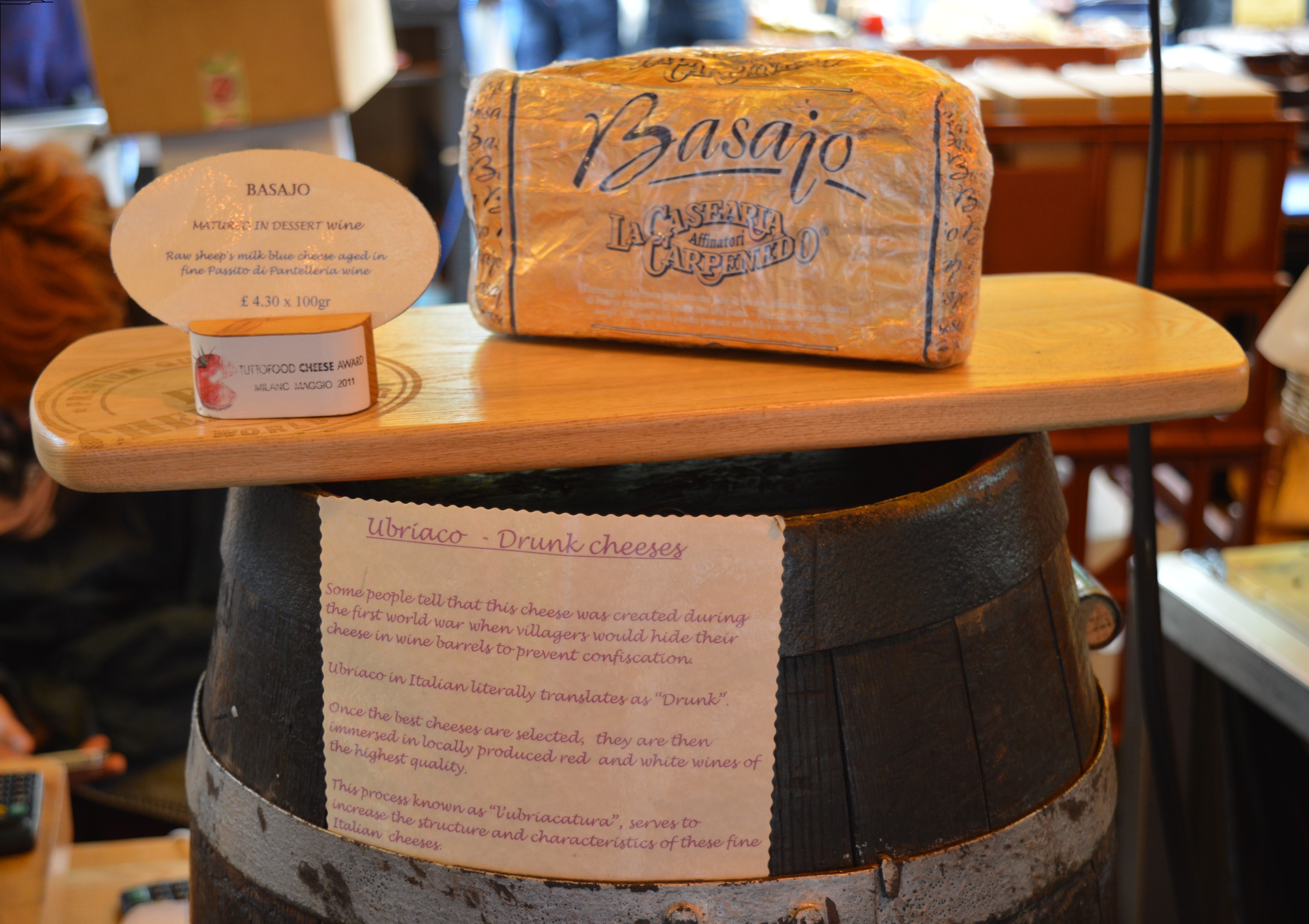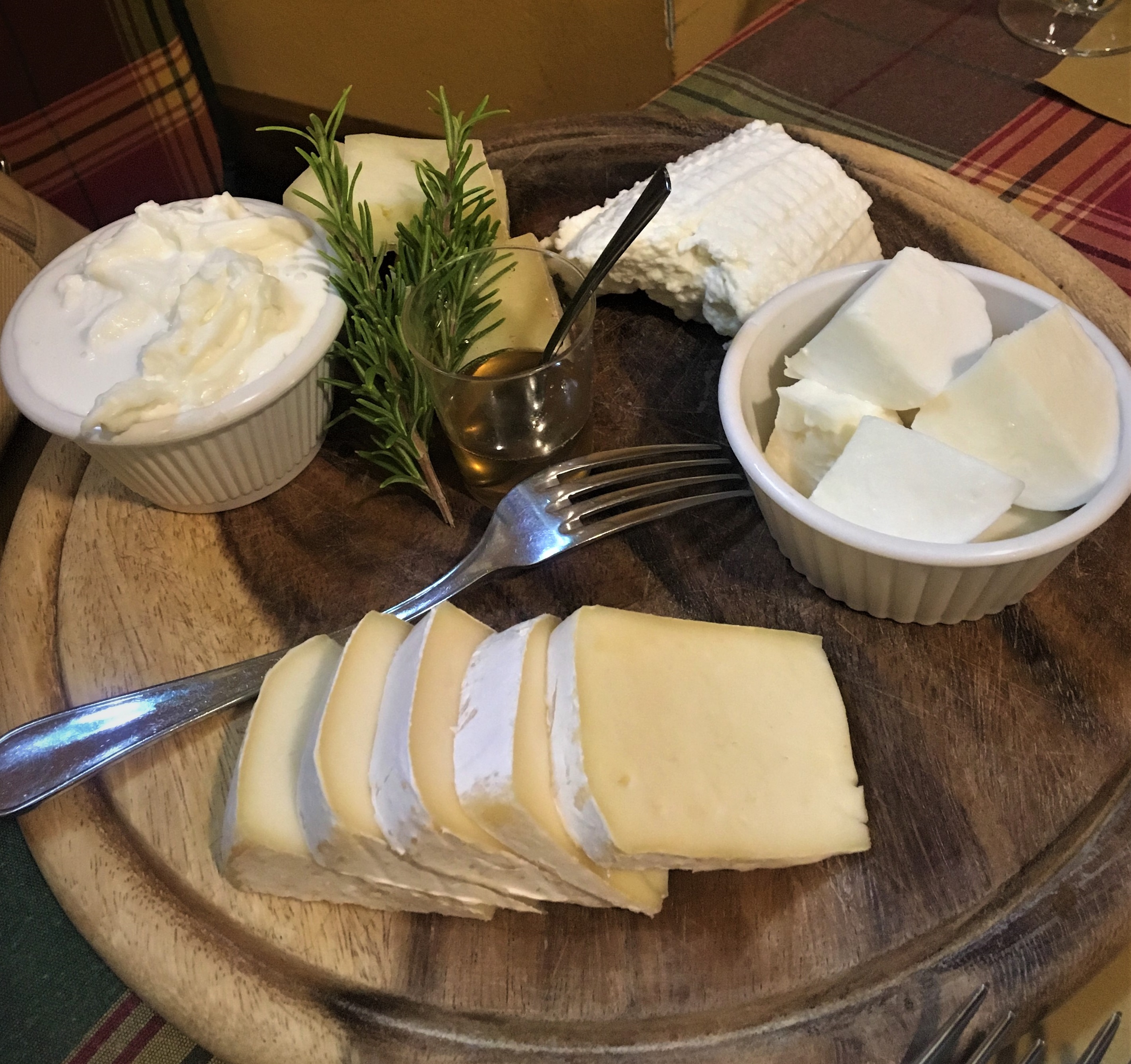Even cheese can be drunken!

Yes, in Italy it can. But I’m sure that won’t come as a surprise…
Italy produces a plethora of cheeses; someone says 300 varieties, others even 400. But the cheese I want to talk to you about today is very special.
However, first of, let’s set the scene…
Imagine an Italian person back in First World War times. Starving. Shocked. Scared. One of the only few pleasures and a source of nourishment available – cheese. The thing is, you have a bunch of Austrian soldiers raiding the place and trying to get your cheese.
What do you do? You hide it. But where?
Somewhere that won’t arouse suspicion and, most importantly, won’t spoil your precious delicacy, of course.
Right, I got it! Grape waste*.
That’s how “drunken cheese” – formaggio ubriaco – was born. Or at least that’s one alleged origin of this treat. I like this theory.
It’s romantic, in a dark way. What we know for sure is that drunken cheese originates from the North-Eastern regions of Veneto and Friuli Venezia Giulia.
*Vinaccia – the grape residue left after the processing of the grape must.
“Ubriaco in Italian literally translates as “Drunk”.
Once the best cheeses are selected, they are then immersed in locally produced red and white wines of the highest quality. This process known as “l’ubriacatura” serves to increase the structure and characteristics of these fine Italian cheeses”.
From vendor at Borough Market, London, UK
The cheese can acquire a purple or yellowish colour depending on whether the wine waste comes from red or white grapes. You might find that the cheese is called in a different way, although it is still the same food – “formaggio ubriaco”, “formaggio ubriacato”, or “formaggio imbriago”.
Italians love this unusual cheese so passionately that, in May 2016, the city of Treviso, Veneto, held the first ever festival entirely dedicated to formaggio. This cheese tastes delicious in all its variations, believe me! So, YES, you guessed it.
My little lesson for today revolves around the obvious fact that wine is great. Cheese is great. They make a lovely couple. And when they are united, the result will surprise your palate but, strategically, it will teach you a very useful booze-related term…

Both “drunk” and “drunken” translate to “ubriaco” in Italian; the meaning and use of this term are the same as in its English equivalents. However, the vocabulary for any state of intoxication by wine is not limited to that. Find out below.
Do you have as many wino terms in your language?
A glossary for drunken people
Alcolizzato: This is a more formal version of the term. Alcoholic. However, it can also be used in more informal settings with a more sarcastic nuance.
Alcolista: Another more formal term. Take AA for example. In Italy, we say “Alcolisti Anonimi”
Alticcio: Tiddly. In Italian, the origin of the word derives from “alto” [tall/high], indicating going beyond a certain limit. Someone is “alticcio” when they have drunk a lot, but they are not yet blind. They shouldn’t drive, though!
Alzare il gomito: To lift one’s elbow (same figurative speech); to drink too much
Beone: Boozer
Bevuto: Drunk / Tight
Brillo: Tipsy
Ebbro: Intoxicated
Sbronzo: Plastered
Spugna: This is a funny one. Literally, it translates to “sponge”. Perhaps similar to “soak” in English. We have fixed expressions where this term is used, such as “Essere una spugna” [To be a sponge] or “Bere come una spugna” [To drink like a sponge]
Ubriacone: Drunkard
And on the opposite spectrum, we have…
Astemio: Teetotal / dry
Sobrio: Sober
